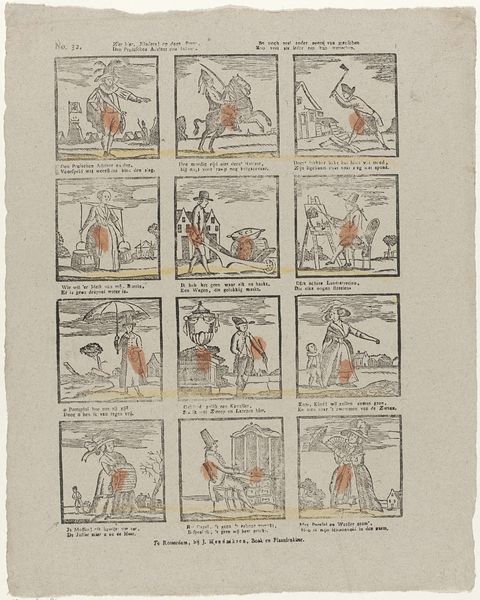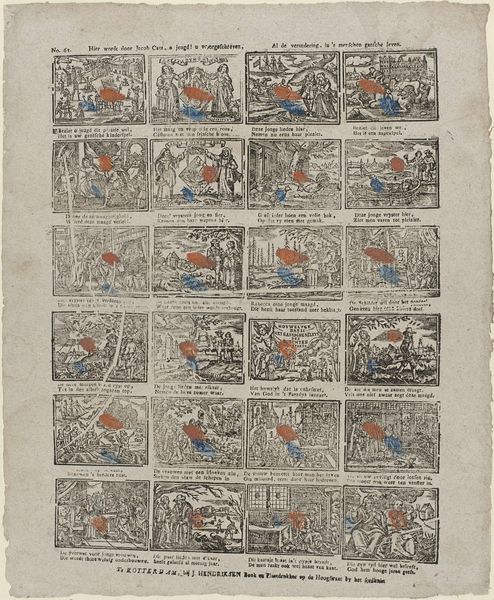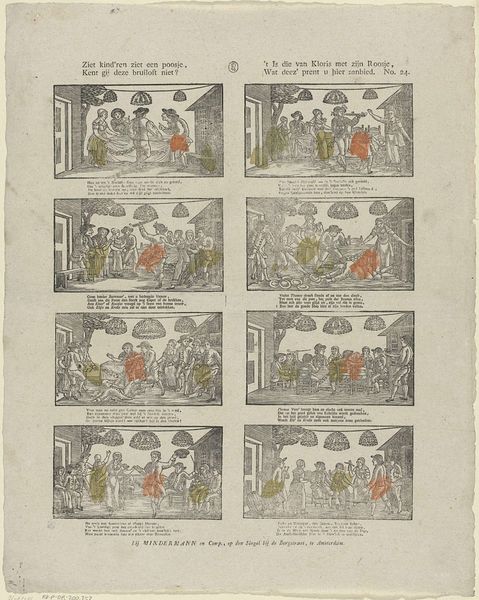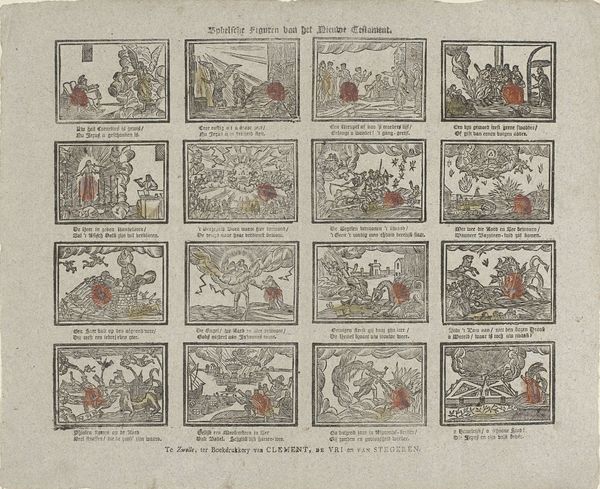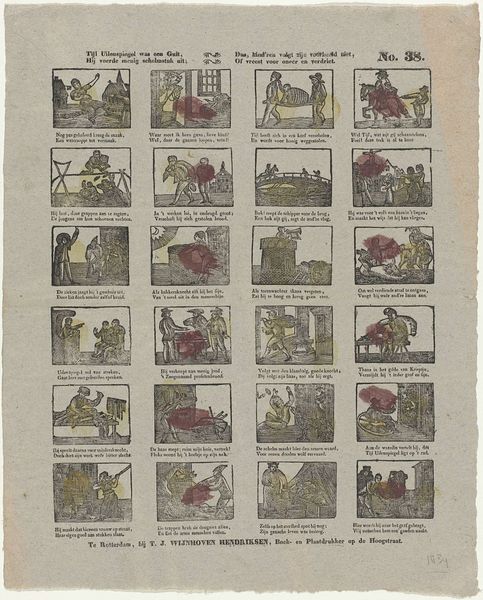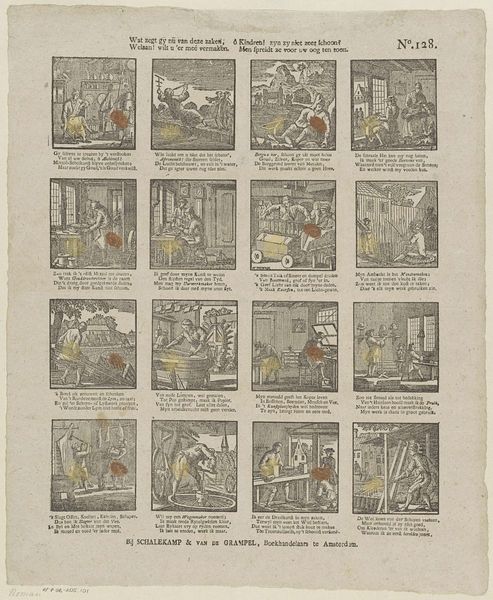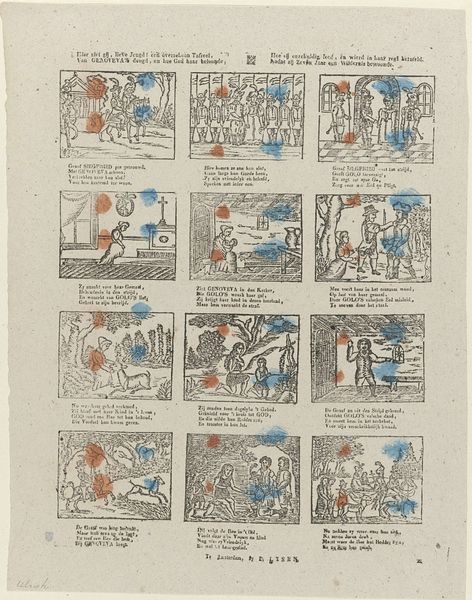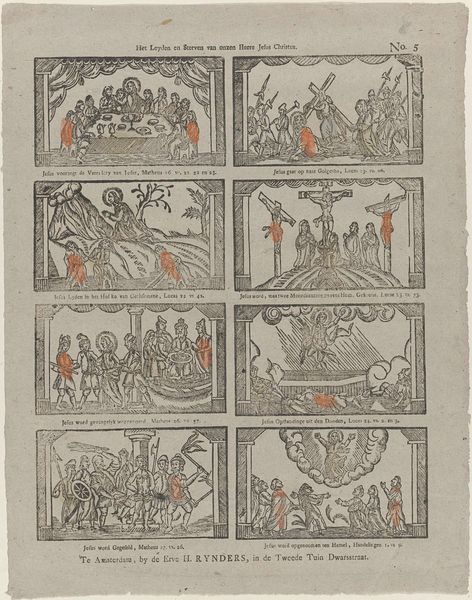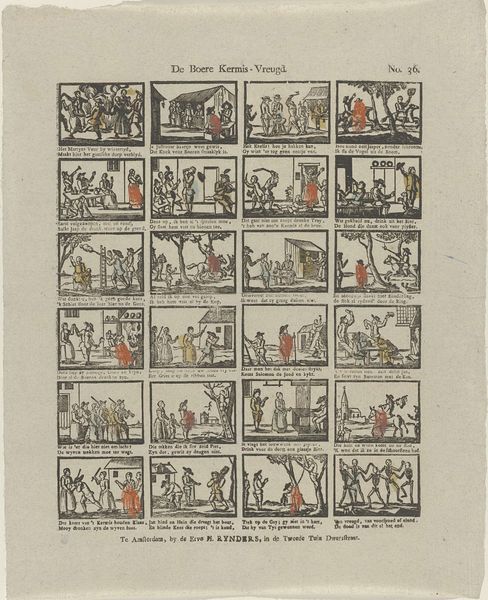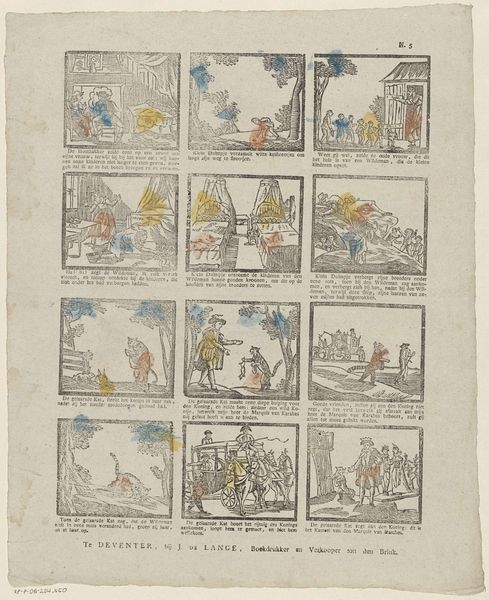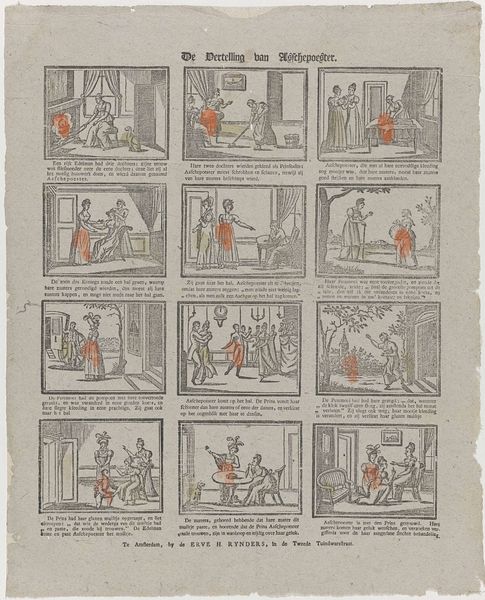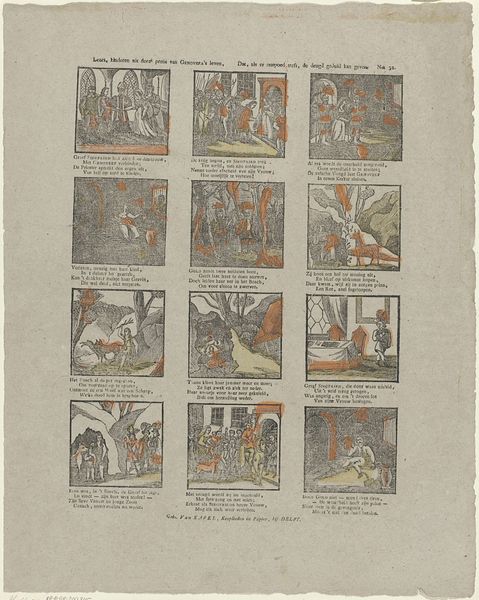
Belegering van Leiden; begonnen den 5 Mey 1574, en verlaten den 3 October 1781 - 1828
0:00
0:00
print, engraving
#
narrative-art
# print
#
genre-painting
#
history-painting
#
engraving
Dimensions: height 414 mm, width 325 mm
Copyright: Rijks Museum: Open Domain
Curator: This is an engraving from between 1781 and 1828, titled "The Siege of Leiden, which began on May 5, 1574, and was abandoned on October 3," by Jan Hendriksen. It depicts different episodes of that historical event. Editor: Immediately, I notice how the scenes are arranged like panels of a comic strip. They’re presented in a clear sequence that reminds me of traditional storytelling. But there is some real grit and solemnity in the events it recalls. Curator: Indeed. These aren't just individual scenes; Hendriksen is carefully constructing a historical narrative. The choice of print medium allows for broad dissemination, crucial for shaping collective memory around pivotal events like the Siege of Leiden during the Eighty Years’ War. Editor: Look at how the city itself, often marked by defensive walls and gathering armies, is a strong repeating symbol throughout. What strikes me are the visual codes deployed around war, suffering and victory – what can these tell us? Curator: We see the city acting as a site of resilience. Each panel seems to capture distinct phases – initial attacks, dwindling supplies, negotiations and the eventual relief. This emphasizes Leiden’s defiance. Remember, this event carries great cultural significance for the Dutch. It symbolized their struggle for independence against Spanish rule. Editor: Precisely! Flags and banners recur as symbols of power and identity and can’t be separated from Leideners’ memory. Even the use of text in the print, I suspect, adds a didactic dimension by directly informing viewers on events. Curator: The role of narrative-historical prints like this can’t be overstated, during a time when national identity was being actively forged and contested. This would likely appear as populist imagery, meant for broad appeal. Editor: The power of imagery, though! It’s fascinating how specific visual devices -- the use of the bird's-eye view in a panel, the use of procession elsewhere, all point to enduring cultural values. This piece acts as a memory site, carrying strong emotional and patriotic associations. Curator: It reminds us that historical events are never just about what happened, but also about how they are remembered and retold, which this artwork has managed so well over time. Editor: An engraving that bridges both information and feeling – quite a compelling way to consider the dynamics between art, memory, and national identity.
Comments
No comments
Be the first to comment and join the conversation on the ultimate creative platform.

